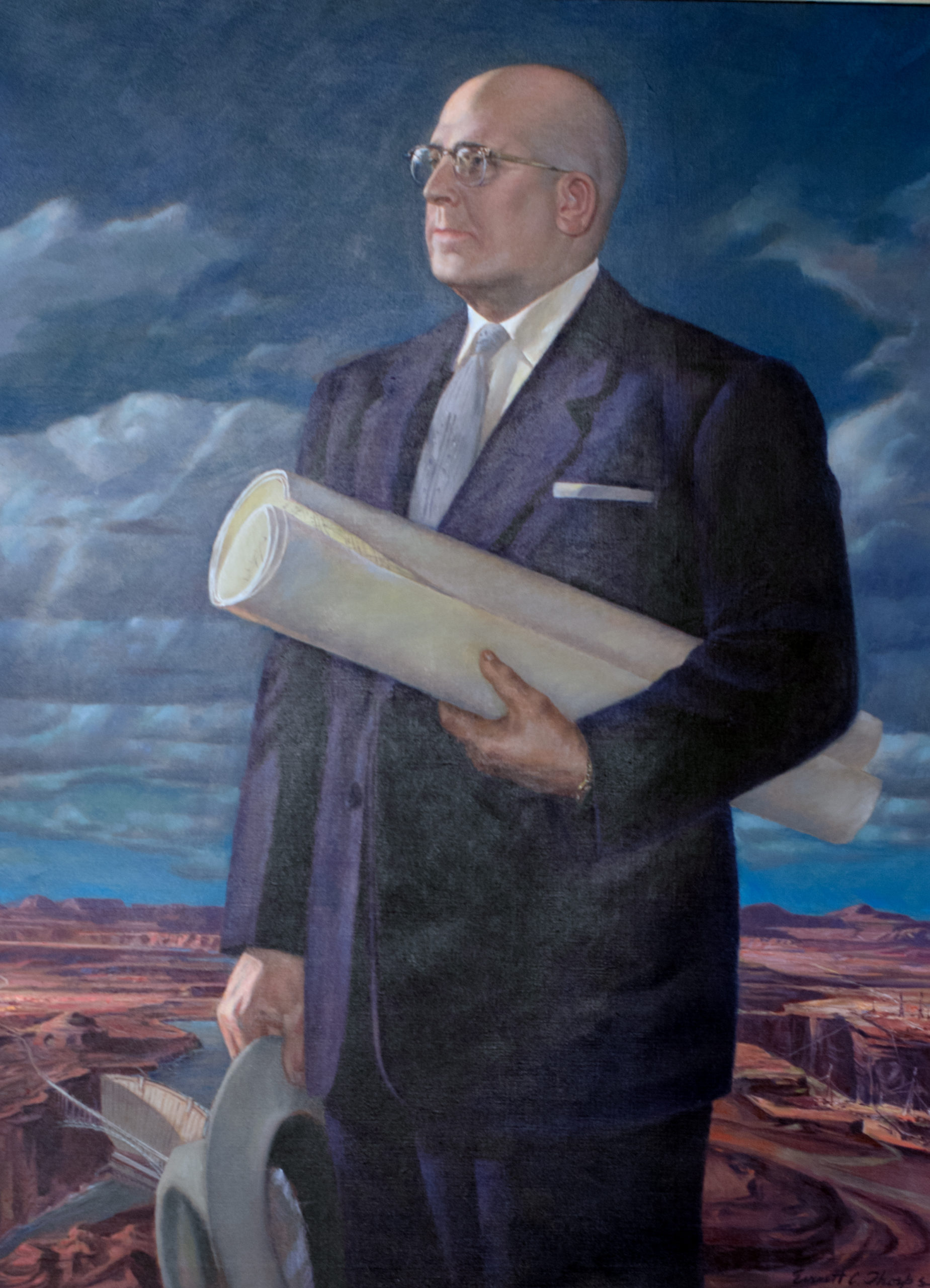Collection: State of Utah Alice Merrill Horne Art Collection
Location: Hall of Governors
Governor 1957–1965
George Dewey Clyde (1898–1972) was born in Springville, Utah. He earned a master’s degree in civil engineering from the University of California at Berkeley. Clyde later joined the faculty of the Utah State Agricultural College (now Utah State University) where he taught classes focused on hydraulic and fluid mechanics and irrigation methods. He was a successful researcher and published nearly 50 academic papers. The State called upon Clyde’s expertise during Utah’s worst drought, and he was appointed state water conservator in 1934.
As governor, Clyde emphasized fiscal efficiency, state’s rights, and water projects. He opposed a “Sunday closing” bill with the argument that not all religions viewed Sunday as the Sabbath. He also oversaw the construction of a multimillion-dollar interstate highway, the building of the University of Utah School of Medicine, and the creation of Canyonlands National Park. Clyde initially opposed the park, believing that large tracts of land should be open to resource extraction. Clyde eventually compromised with National Parks supporter Senator Frank Moss, and a much smaller park was formed.
Artist
Everett “Ev” Clark Thorpe (1907–1983) began his art career as a sports artist for The Deseret News and The Salt Lake Tribune. In Utah, he studied under LeConte Stewart and Calvin Fletcher. He also studied art at Chouinard School of Art (now California Institute of the Arts), Syracuse University, and Hans Hofmann School of Arts. Thorpe taught art at Utah State University for 40 years, and his work ranged from illustration to portraiture to mural projects. Thorpe painted Governor Clyde in his professional environment, standing in Utah’s arid southwest desert with plans for the Glen Canyon Dam in hand.
